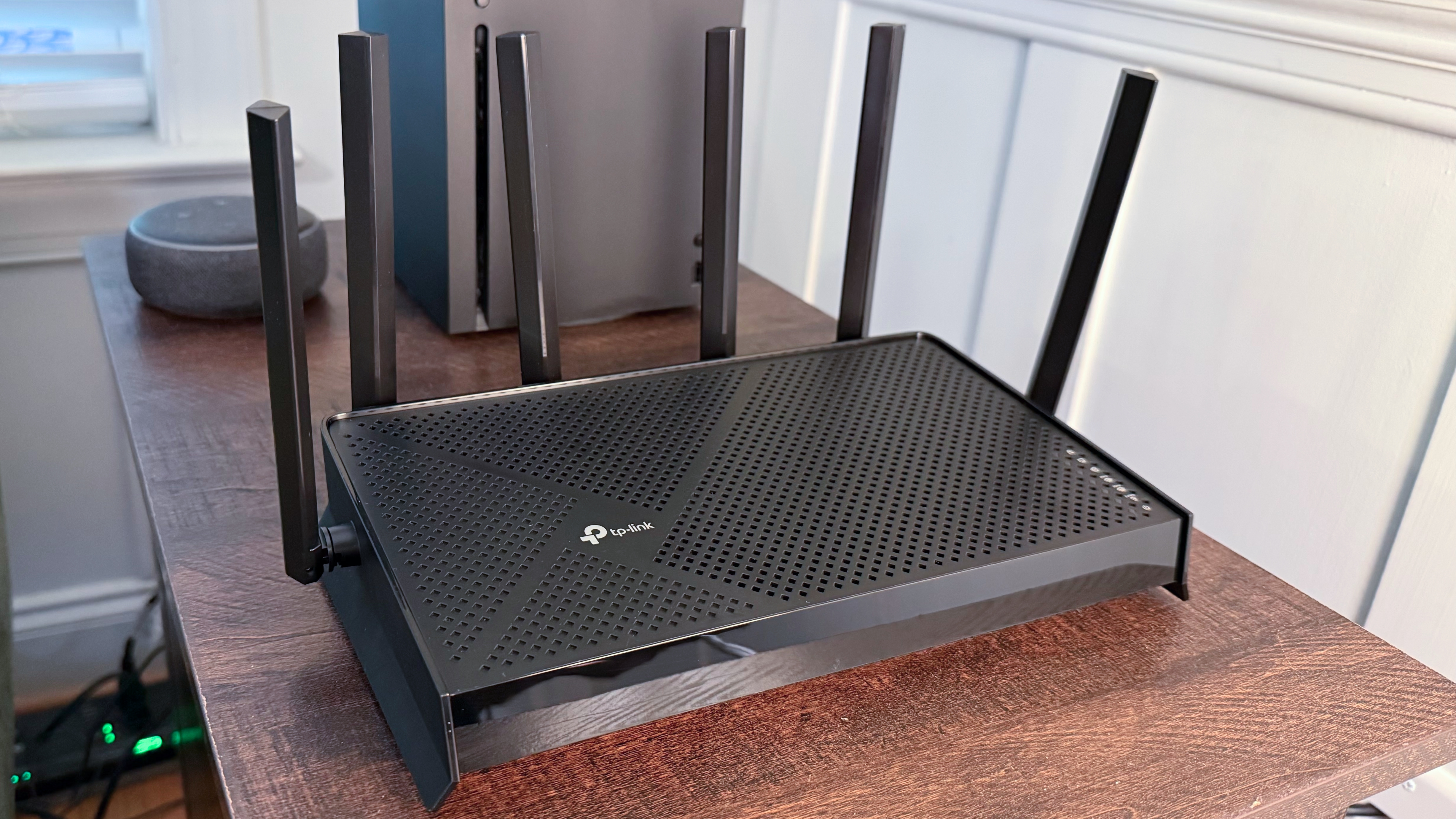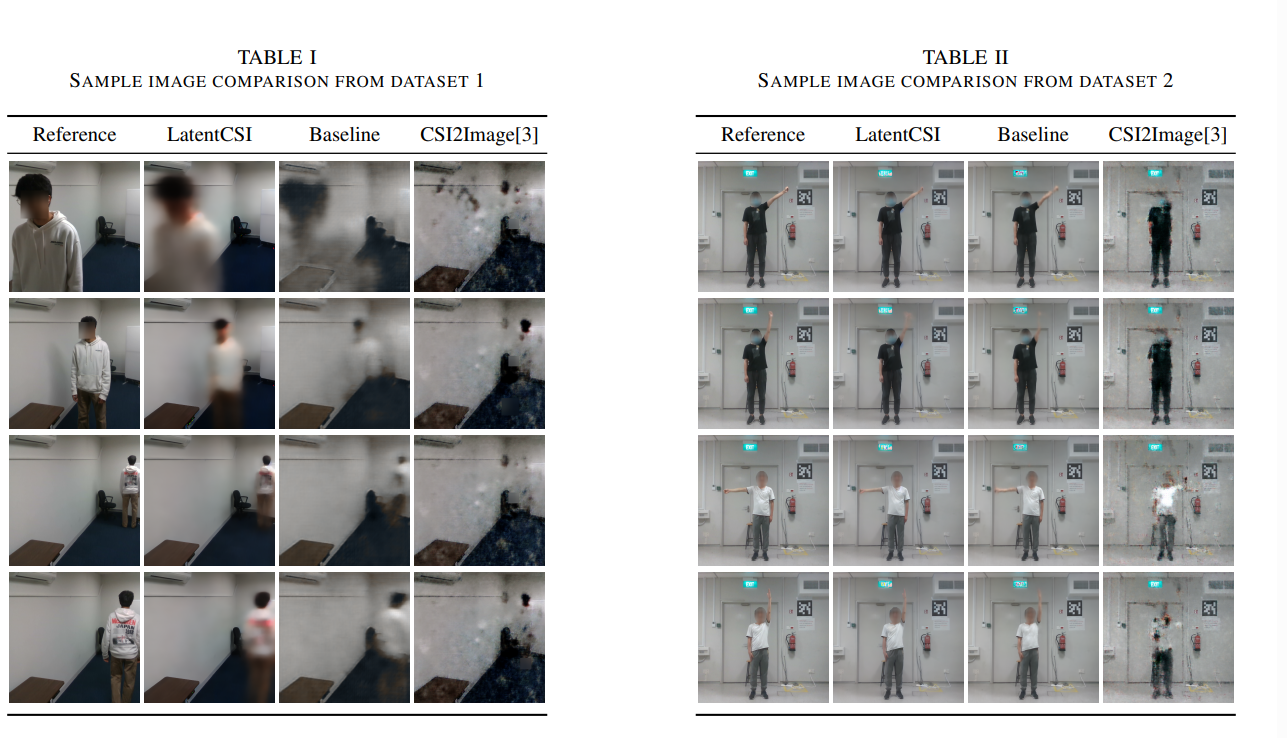Wi-Fi signals can now create accurate images of a room with the help of pre-trained AI — 'LatentCSI' leverages Stable Diffusion 3 to turn Wi-Fi data into a digital paintbrush

The Wi-Fi devices around us constantly share signals between each other, creating a perpetually reverberant environment where these radio waves become borderline spatially aware. Because the signals bounce not only between transmitter and receiver, but also off your walls, furniture, and everything else in your space, they end up carrying information about where things are. This echo-y data is referred to as Wi-Fi CSI (Channel State Information), and while it could previously be used to map out rough sketches of a room, AI has just made it a lot more accurate.
Researchers at the Institute of Science Tokyo have figured out a way to combine latent diffusion models with Wi-Fi CSI to generate high-resolution images of any room that are not only accurate, but also efficient to create. CSI-based imaging isn't new, but it produces crude results at best because there isn't enough data to figure out how a room looks (and it's too compute-heavy, regardless, which also makes it slow). Here's where AI can come in and essentially help fill in the gaps to make it actually photorealistic. That's done by mapping CSI into latent space instead of pixel space, which is why the method is called "LatentCSI."
Pixel space refers to normal images that carry lots of raw data, whereas latent space is a compressed internal representation of an image that modern image generators (like Stable Diffusion) use. LatentCSI takes Wi-Fi CSI, translates it into latent space, and then feeds it into a pretrained diffusion model that can generate high-res images for you, imagining all the fine details and textures Wi-Fi alone can’t capture. The researchers used Stable Diffusion 3 with a modified encoder that accepts Wi-Fi data instead of regular images, so it's a lot quicker and has less overhead.
Pretrained is the keyword, though, as researchers took actual photos of the room and trained the model on those, meaning it already knows what the room looks like. Therefore, AI is doing the heavy lifting here, while Wi-Fi CSI provides real-time information about how the room actually “looks” right now — how many people are present, where they’re standing, and the overall layout of objects within. Check out the full paper if you want to dive into the nitty-gritty of all the science.
Anyhow, the limitation is that LatentCSI, while strikingly better than prior Wi-Fi imagery, only works with pretrained models that already have a strong baseline understanding of the environment. You can’t just send your ISP a snapshot of router data and have it guess-render your room. However, with some modern modems already capable of motion-sensing, it’s easy to imagine the privacy concerns stemming from this. Even if you try to picture positive use cases, it all ties back to surveillance. The writing's surely on the wall, but, then again, it's just a lab demo for now.
Follow Tom's Hardware on Google News, or add us as a preferred source, to get our up-to-date news, analysis, and reviews in your feeds. Make sure to click the Follow button!
Get Tom's Hardware's best news and in-depth reviews, straight to your inbox.

Hassam Nasir is a die-hard hardware enthusiast with years of experience as a tech editor and writer, focusing on detailed CPU comparisons and general hardware news. When he’s not working, you’ll find him bending tubes for his ever-evolving custom water-loop gaming rig or benchmarking the latest CPUs and GPUs just for fun.
-
maxtraxv3 pre trained? so you told it what the room looks like then "mapped" it?Reply
whats the point? -
FreeBee101 Maybe if it's trained it can find similar elements and image that also. How long until our passwords and dignity are at risk.Reply -
bit_user Reply
The point is that the mapping enables someone to see what's happening inside the room, at a later point when they only have access to the wifi data.maxtraxv3 said:pre trained? so you told it what the room looks like then "mapped" it?
whats the point? -
bit_user Reply
Regarding "dignity, it can't see what you're wearing. It's just guessing what the individuals in the sample images were wearing based on how people were clothed in the training data.FreeBee101 said:Maybe if it's trained it can find similar elements and image that also. How long until our passwords and dignity are at risk.
Regarding passwords, the resolution isn't good enough to see what you're typing and (so far as we know) it can't see what's being displayed on a screen.
